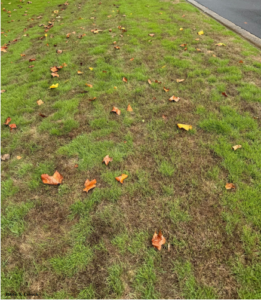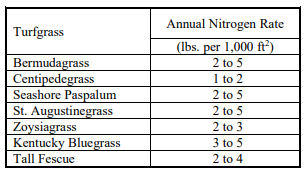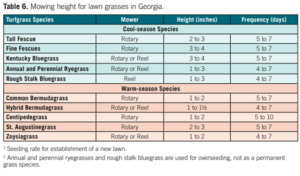Heather N. Kolich, ANR Agent, UGA Extension Forsyth County
As the drought intensified through July, landscapes showed progressive signs of stress. By the third week without rainfall, tree leaves turned colors and dropped prematurely. Plants stalled and stopped growing. Even under irrigation, lawns parched and turned brown.
Despite receiving an average of 50 inches of rain each year, drought is usually part of our annual cycle in Georgia. Drought occurs when too little rain falls over the course of a season, resulting in lower streamflows and declines in water volume in lakes, reservoirs, and wells.

Under certain conditions, however, drought can happen much faster. Rapid-onset or “flash droughts” occur when high temperatures, winds, and/or incoming radiation act in concert with a lack of precipitation to cause total evaporation of water from the soil and from plant surfaces. When these factors work in concert, drought conditions rapidly intensify, causing a change in drought severity of two or more categories during a four-week period.
Crop loss and plant injury are among the consequences of flash drought. According to the National Integrated Drought Information System, this past June was the 4th dryest in Georgia since record keeping began in 1895. Even though rain returned in the second half of July and temperatures have moderated, much of north and central Georgia remain in the Abnormally Dry and Moderate Drought categories.
In a recent blog post, University of Georgia Cooperative Extension Turfgrass Specialist Clint Waltz offered advice about what to expect as far as lawn recovery goes. Waltz reiterated that warm season turfgrasses are resilient. They can tolerate a couple of weeks without rain or irrigation and recover quickly after a good, soaking rainfall. One exception, however, is zoysiagrass, which may continue to struggle, showing dead leaves in brown or black spots long after other warm season turfgrass species rebound.
“With the rain, new shoots will eventually emerge from below ground rhizomes and drought stressed spots will green-up,” Waltz stated.
The transformation may take several weeks, as slow recovery is a characteristic of zoysiagrass. In the meantime, Waltz recommends continuing to mow zoysia lawns to the correct height of 1.5 inches and fertilize as normal. He also suggests that applying a home lawn fungicide might help protect new grass shoots as they emerge. Preventing weeds from colonizing the dead patches is also important.

What Waltz cautions against is adding extra nitrogen to try to boost recovery. Nitrogen in excess of what the plant needs for growth increases the plant’s need for water, could increase insect damage, and could create conditions for disease problems. Fertilizing when disease is present actually feeds the disease, and some fungal diseases overwinter and show up in the spring.

Finally, don’t fertilize warm season turfgrasses (bermudagrass, centipedegrass, St. Augustinegrass, and zoysiagrass) after August. Fertilizer should only be applied during months of active growth, and after August, warm season lawns begin the necessary processes of slowing growth and entering dormancy to survive the winter. Late season nitrogen applications disrupt these processes, delay dormancy, and could cause winter injury.